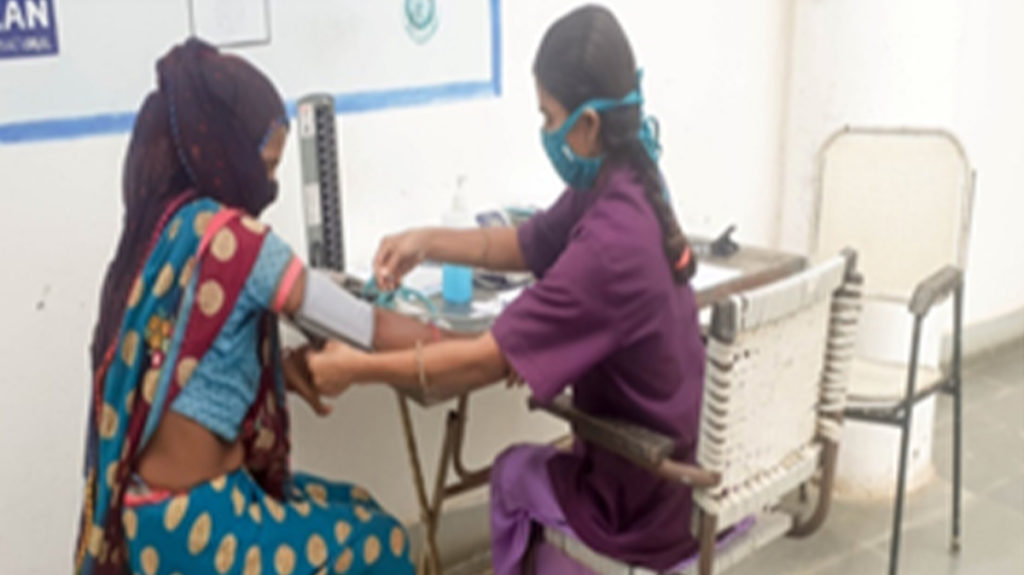In India, about 70% of expenditure on health is borne by the patients. As a result, every year, 60 million people slip into poverty because of out-of-pocket expenditure (OOPE) on health. As per World Health Organisation, “Primary healthcare is a whole-of-society approach to health that aims at ensuring the highest possible level of health and well-being and their equitable distribution by focusing on people’s needs and as early as possible along the continuum from health promotion and disease prevention to treatment, rehabilitation and palliative care, and as close as feasible to people’s everyday environment.”
OOPE refers to any direct outlay by households, including gratuities and in-kind payments, to health practitioners and medicines.
In India, Primary Health Centres (PHCs) and sub-centres at the village and gram panchayat levels are the nearest medical institutions that provide care. The Finance Commission 2020 highlights the challenges of primary healthcare in India. The structural challenges include low investment and weaker institutional capacity on the supply side, including inadequate doctors, paramedics, hospitals, and the insufficient number of healthcare centres like PHCs, and sub-centres.
The Commission notes that OOPE on health further increased because of poor private health facilities, especially in rural areas. Private health care is expensive but also lacks trained manpower. People reach out to private hospitals for minor illnesses such as cold, fever and diarrhoea irrespective of their ability to afford to pay (FC 2020).
Thus, to decrease the burden on the poor, the government needs to increase health expenditure, especially on primary healthcare. As per the Finance Commission report 2020, MoHFW suggested earmarking 10% of the devolution amount proposed by the Finance Commission for the health sector, with at least two-thirds i.e.₹513,772 crores of this being reserved for primary healthcare. As per the Economic Survey, from 2014 to 2020 centre’s expenditure on healthcare stayed between 1.2% and 1.6% of India’s GDP.

Thus, to provide easier access to primary health care as well as reduce the OOPE, interventions focused on primary healthcare are the need of the hour. In FY 2021-22, Give supported many such nonprofit partners who led successful programmes on improving primary health care.
Mobile Healthcare Unit – An initiative of HelpAge
HelpAge’s Mobile Healthcare Unit (MHU) provides sustainable healthcare solutions to destitute elders and their community. Each MHU has a doctor, a pharmacist and a social worker. The MHU caters to rural areas of Udaipur in Rajasthan. The services include free consultation, treatment, medicines for common ailments, awareness and diagnostics of common ailments & non-communicable diseases such as diabetes, arthritis, asthma, hypertension, refractive error correction and even counselling and awareness of health and nutrition.
Chhagan Lal Suman (71 years old) lives in Savina Basti, Udaipur. He lives with his younger son, a daily wage labourer. Chhagan receives the old age pension, but is not enough to run a family of five.
Chhagan has been suffering from Asthma for the last five years. He went to a private hospital for treatment but could not continue it regularly because of the high cost. His family could not afford the treatment.
He came to know about MHU. MHU medical consultant checked his report and prescribed medicines. After taking regular treatment from MHU, his health has seen considerable improvement. He also went through a refractive correction and received the power glasses free of cost. Thanks to MHU, Chhagan was saved from being pushed into extreme poverty as he would have spent a considerable about of money on treatment.
Amrit Clinics – An initiative by Seva Mandir
Amrit Clinic developed by Seva Mandir is a rural hospital providing curative, preventative healthcare services and treatment to communities in the remotest villages of Udaipur. Since June 2018, Seva Mandir has partnered with Basic Health Care Services (BHS), a not-for-profit organization which provides primary health care level. BHS provides qualified doctors and trains nurses (General Nursing) and other health workers.
The Amrit clinic model has proved to be a considerable success at Kojawara, with over 6,000 patients being treated in the first year. The clinic’s outreach service is currently in 14 remote villages and provides essential lifesaving antenatal and postnatal care services.
Amrit Clinic and Sangeeta
Sangeeta comes from a small village in the Kherwara area of the Udaipur district, where most people depend on subsistence agriculture and the average daily per capita income is just ₹35. Sangeeta contracted fever, and she approached a ‘quack’ and then a local doctor. They misdiagnosed her both times and she had to spend around ₹5000.
As her condition continued to deteriorate, Sangeeta visited the Seva Mandir’s Amrit Clinic. After a brief consultation, she was correctly diagnosed with tuberculosis and was provided with full medication for 1 week.

A quick and correct diagnosis followed by medication for a nominal amount meant Sangeeta saved a lot of money and as well. Sangeeta is now a regular visitor, and she believes that her family and friends that she has recommended this clinic have saved a lot of money.
The need for a focus on primary healthcare
The World Health Organisation (WHO), emphasising the importance of primary healthcare says that it is imperative to achieve health-related Sustainable Development Goals (SDGs) and universal health coverage. Poor primary healthcare leads to increased poverty, hunger, education, gender inequality, poor clean water and sanitation, less work and economic growth, and reducing equality and climate action.
Interventions in primary healthcare like the Mobile Health Unit and Amrit clinics supported by Give not only provide increased access to quality primary health care services to remotest communities and improve their health but also prevent them from getting into the vicious cycle of poverty.
Established in 2000, Give is the largest and most trusted giving platform in India. Our community of 2M+ donors and 250+ corporate partners and brands have supported 2,800+ nonprofits, impacting 15M+ lives across India.
Discover more from
Subscribe to get the latest posts sent to your email.

